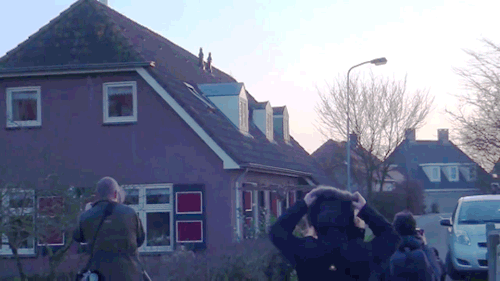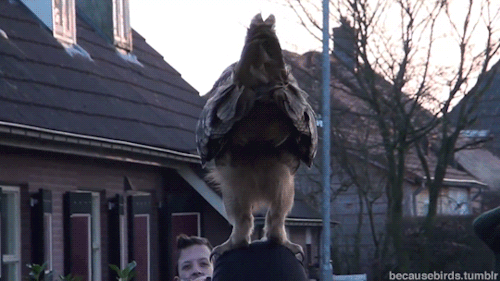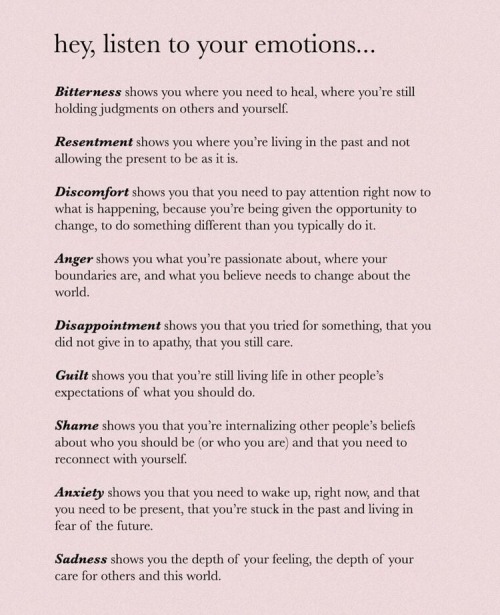It’s Murder Time At College So Everything’s Chaos
It’s Murder time at college so everything’s chaos
More Posts from Ourvioletdeath and Others
You are oblivious to the fact that war has broken out, because you have filtered everything out from your news and social media containing the words star or wars until you see the movie.

Is Your Nervous System a Democracy or a Dictatorship?
A single “dictator neuron” can take charge of complex behaviors
How does the architecture of our brain and neurons allow each of us to make individual behavioral choices? Scientists have long used the metaphor of government to explain how they think nervous systems are organized for decision-making. Are we at root a democracy, like the U.K. citizenry voting for Brexit? A dictatorship, like the North Korean leader ordering a missile launch? A set of factions competing for control, like those within the Turkish military? Or something else?
In 1890, psychologist William James argued that in each of us “[t]here is… one central or pontifical [nerve cell] to which our consciousness is attached.” But in 1941, physiologist and Nobel laureate Sir Charles Sherrington argued against the idea of a single pontifical cell in charge, suggesting rather that the nervous system is “a million-fold democracy whose each unit is a cell.”
So who was right?
For ethical reasons, we’re rarely justified in monitoring single cells in healthy people’s brains. But it is feasible to reveal the brain’s cellular mechanisms in many nonhuman animals. As I recount in my book “Governing Behavior,” experiments have revealed a range of decision-making architectures in nervous systems – from dictatorship, to oligarchy, to democracy.
A Neural Dictatorship
For some behaviors, a single nerve cell does act as a dictator, triggering an entire set of movements via the electrical signals it uses to send messages. (We neurobiologists call those signals action potentials, or spikes.) Take the example of touching a crayfish on its tail; a single spike in the lateral giant neuron elicits a fast tail-flip that vaults the animal upward, out of potential danger. These movements begin within about one hundredth of a second of the touch.
Similarly, a single spike in the giant Mauthner neuron in the brain of a fish elicits an escape movement that quickly turns the fish away from a threat so it can swim to safety. (This is the only confirmed “command neuron” in a vertebrate.)
Each of these dictator neurons is unusually large – especially its axon, the long, narrow part of the cell that transmits spikes over long distances. Each dictator neuron sits at the top of a hierarchy, integrating signals from many sensory neurons, and conveying its orders to a large set of subservient neurons that themselves cause muscle contractions.
Such cellular dictatorships are common for escape movements, especially in invertebrates. They also control other kinds of movements that are basically identical each time they occur, including cricket chirping.
Small Team Approach
But these dictator cells aren’t the whole story. Crayfish can trigger a tail-flip another way too – via another small set of neurons that effectively act as an oligarchy.
These “non-giant” escapes are very similar to those triggered by giant neurons, but begin slightly later and allow more flexibility in the details. Thus, when a crayfish is aware it is in danger and has more time to respond, it typically uses an oligarchy instead of its dictator.
Similarly, even if a fish’s Mauthner neuron is killed, the animal can still escape from dangerous situations. It can quickly make similar escape movements using a small set of other neurons, though these actions begin slightly later.
This redundancy makes sense: it would be very risky to trust escape from a predator to a single neuron, with no backup – injury or malfunction of that neuron would then be life-threatening. So evolution has provided multiple ways to initiate escape.
Neuronal oligarchies may also mediate our own high-level perceptions, such as when we recognize a human face.
Majority Wins
For many other behaviors, however, nervous systems make decisions through something like Sherrington’s “million-fold democracy.”
For example, when a monkey reaches out its arm, many neurons in its brain’s motor cortex generate spikes. Every neuron spikes for movements in many directions; but each has one particular direction that makes it spike the most.
Researchers hypothesized that each neuron contributes to all reaches to some degree, but spikes the most for reaches it’s contributing to most. To figure it out, they monitored many neurons and did some math.
Researchers measured the rate of spikes in several neurons when a monkey reached toward several targets. Then, for a single target, they represented each neuron by a vector – its angle indicates the neuron’s preferred reaching direction (when it spikes most) and the length indicates its relative rate of spiking for this particular target. They mathematically summed their effects (a weighted vector average) and could reliably predict the movement outcome of all the messages the neurons were sending.
This is like a neuronal election in which some neurons vote more often than others. An example is shown in the figure. The pale violet lines represent the movement votes of individual neurons. The orange line (the “population vector”) indicates their summed direction. The yellow line indicates the actual movement direction, which is quite similar to the population vector’s prediction. The researchers called this population coding.
For some animals and behaviors, it is possible to test the nervous system’s version of democracy by perturbing the election. For example, monkeys (and people) make movements called “saccades” to quickly shift the eyes from one fixation point to another. Saccades are triggered by neurons in a part of the brain called the superior colliculus. Like in the monkey reach example above, these neurons each spike for a wide variety of saccades but spike most for one direction and distance. If one part of the superior colliculus is anesthetized – disenfranchising a particular set of voters – all saccades are shifted away from the direction and distance that the now silent voters had preferred. The election has now been rigged.
A single-cell manipulation demonstrated that leeches also hold elections. Leeches bend their bodies away from a touch to their skin. The movement is due to the collective effects of a small number of neurons, some of which voted for the resulting outcome and some of which voted otherwise (but were outvoted).
If the leech is touched on the top, it tends to bend away from this touch. If a neuron that normally responds to touches on the bottom is electrically stimulated instead, the leech tends to bend in approximately the opposite direction (the middle panel of the figure). If this touch and this electrical stimulus occur simultaneously, the leech actually bends in an intermediate direction (the right panel of the figure).
This outcome is not optimal for either individual stimulus but is nonetheless the election result, a kind of compromise between two extremes. It’s like when a political party comes together at a convention to put together a platform. Taking into account what various wings of the party want can lead to a compromise somewhere in the middle.
Numerous other examples of neuronal democracies have been demonstrated. Democracies determine what we see, hear, feel and smell, from crickets and fruit flies to humans. For example, we perceive colors through the proportional voting of three kinds of photoreceptors that each respond best to a different wavelength of light, as physicist and physician Thomas Young proposed in 1802. One of the advantages of neuronal democracies is that variability in a single neuron’s spiking is averaged out in the voting, so perceptions and movements are actually more precise than if they depended on one or a few neurons. Also, if some neurons are damaged, many others remain to take up the slack.
Unlike countries, however, nervous systems can implement multiple forms of government simultaneously. A neuronal dictatorship can coexist with an oligarchy or democracy. The dictator, acting fastest, may trigger the onset of a behavior while other neurons fine-tune the ensuing movements. There does not need to be a single form of government as long as the behavioral consequences increase the probability of survival and reproduction.
Image Credit: Getty Images/iStockphoto (MARS)
Source: The Conversation (by Dr. Ari Berkowitz)



Dutch “Cuddly Owl” finally caught on video. This bird has been cuddling the citizens of this town for a while. It likes to land and stomp on people’s heads.
Watch the video

Geneticists are starting to unravel evolution’s role in mental illness
Psychiatric disorders can be debilitating and often involve a genetic component, yet, evolution hasn’t weeded them out. Now, recent work is beginning to reveal the role of natural selection — offering a peek at how the genetic underpinnings of mental illness has changed over time.
Many psychiatric disorders are polygenic: they can involve hundreds or thousands of genes and DNA mutations. It can be difficult to track how so many genetic regions evolved, and such studies require large genome data sets. But the advent of massive human genome databases is enabling researchers to look for possible connections between mental illnesses and the environmental and societal conditions that might have driven their emergence and development. Others are looking to Neanderthal genetic sequences to help inform the picture of these disorders, as well as cognitive abilities, in humans. Several of these teams presented their findings at the American Society of Human Genetics (ASHG) meeting in Orlando, Florida, in late October.
You discover that you have the ability to let other people experience your nostalgia. You find that your friend needs some comfort after a rather terrible day. You take a deep breath, put your hand on their shoulder, and let the memories begin.
Psychologists and child development specialists have also come up with ways to support shy kids. The key, said Sandee McClowry, a psychologist at New York University, is to nudge children out of their comfort zones without trying to change their fundamental natures.

😍😍😍






Anatomical studies and drawings by Leonardo da Vinci.


Rage
Creative title, right? Probably not to be honest, it sounds like something a hipster would post, or an emotional teenage girl(not being sexist, just providing a cliché example). Nonetheless, I feel rather compelled to put that as the title, mainly because it’s something that I feel pretty often. Not necessarily the anger, but the violent aspect of rage, that nearly uncontrollable violence that builds up inside you, is something that I feel virtually every day. Goodness, I sound so whiny, but I feel like I have to express it somehow or else it’s going to eat away at my emotional health.
I recognize that violence isn’t the answer, but it’s infuriating to be unable to do anything other than think about what you would do to someone who truly deserves to suffer. Of course it sounds rather sociopathic, but there are people to truly need to get whats coming to them from time to time.
It’s hard to describe the feeling I get... it’s a mixture of frustration with anxiety, which produces helplessness and then finally creates the violent urge to hurt someone. I have never done anything under the influence of this urge except for once, which I would rather not get into as I was luckily stopped before things got too far. I learned to control the rage, but the build up of it makes it harder and harder to control. I realized that working out often helps reduce the buildup, but what happens when you don’t have time to work out and you are constantly placed under a lot of stress? Well, you have several options; blow up, take it out on someone, or take a break.
Of course, the most socially acceptable answer is to take a break, which would usually require going out for some fresh air, but in more extreme circumstances it could mean take a day or two off from work or school, and that SUCKS. Taking a day off will just add to your workload afterwards, since you’ll have to make up for the time you lost the last day. Conversely, what would happen if you let your rage out? Well, if you let it out on someone else, you could hurt them, both mentally and physically. And just blowing up could get you kicked out of your workplace, and maybe even sent to jail if things get physical.
So what is there to do? This is a problem that I find myself to be facing rather often, and it always feels like a lose-lose situation. Maybe by talking about it things could get better, but who really wants to hear someone bitch about their life? I personally would find that to be extremely boring, and it might not even work! The way I found to be a good reliever is just to write it out, but its taken me several days to put this all into something concise, a so what happens to those people who don’t have the time? I guess they turn to drugs? I’m not really sure to be honest.
Maybe my point got lost while I was blabbering about this whole thing, but what I meant to emphasize was that stress, rage and anger can easily build up in people, and sometimes there really is just no way to relieve it, which is extremely frustrating to me.
Goodness, I wrote way too much... Oh well, it helped me vent, which I guess was the purpose of this. If anyone ever actually reads this, I hope you’ve enjoyed my rather long rant on rage and anger, and I hope it was somehow beneficial to you, in whatever way that may be.
-
 robinstars13 reblogged this · 1 month ago
robinstars13 reblogged this · 1 month ago -
 limewind-ferie liked this · 2 months ago
limewind-ferie liked this · 2 months ago -
 kychloreine liked this · 2 months ago
kychloreine liked this · 2 months ago -
 blaze3568 reblogged this · 2 months ago
blaze3568 reblogged this · 2 months ago -
 pie-shenanigans liked this · 2 months ago
pie-shenanigans liked this · 2 months ago -
 novicehydra reblogged this · 2 months ago
novicehydra reblogged this · 2 months ago -
 solena2 reblogged this · 2 months ago
solena2 reblogged this · 2 months ago -
 irlmantaray reblogged this · 2 months ago
irlmantaray reblogged this · 2 months ago -
 irlmantaray liked this · 2 months ago
irlmantaray liked this · 2 months ago -
 robog55 liked this · 2 months ago
robog55 liked this · 2 months ago -
 violettends liked this · 2 months ago
violettends liked this · 2 months ago -
 biblicallyaccurate-candylady reblogged this · 2 months ago
biblicallyaccurate-candylady reblogged this · 2 months ago -
 jasmine-green-t liked this · 2 months ago
jasmine-green-t liked this · 2 months ago -
 hauntedsuns liked this · 2 months ago
hauntedsuns liked this · 2 months ago -
 sureinsunlight liked this · 2 months ago
sureinsunlight liked this · 2 months ago -
 soupboysoup liked this · 2 months ago
soupboysoup liked this · 2 months ago -
 chef-boygirlardee liked this · 2 months ago
chef-boygirlardee liked this · 2 months ago -
 nanowired-lover reblogged this · 2 months ago
nanowired-lover reblogged this · 2 months ago -
 nanowired-lover liked this · 2 months ago
nanowired-lover liked this · 2 months ago -
 lynx-of-storms reblogged this · 2 months ago
lynx-of-storms reblogged this · 2 months ago -
 lynx-of-storms liked this · 2 months ago
lynx-of-storms liked this · 2 months ago -
 bees-n-bones reblogged this · 2 months ago
bees-n-bones reblogged this · 2 months ago -
 thecottageinthedark reblogged this · 2 months ago
thecottageinthedark reblogged this · 2 months ago -
 mothnem liked this · 2 months ago
mothnem liked this · 2 months ago -
 the-golden-ghost reblogged this · 2 months ago
the-golden-ghost reblogged this · 2 months ago -
 wheresmybloodynauglamir liked this · 2 months ago
wheresmybloodynauglamir liked this · 2 months ago -
 ridiculous-lazybug liked this · 2 months ago
ridiculous-lazybug liked this · 2 months ago -
 that-taters-my-tots reblogged this · 2 months ago
that-taters-my-tots reblogged this · 2 months ago -
 morporkian-cryptid reblogged this · 2 months ago
morporkian-cryptid reblogged this · 2 months ago -
 morporkian-cryptid liked this · 2 months ago
morporkian-cryptid liked this · 2 months ago -
 moadej reblogged this · 2 months ago
moadej reblogged this · 2 months ago -
 moadej liked this · 2 months ago
moadej liked this · 2 months ago -
 just-a-little-unionoid reblogged this · 2 months ago
just-a-little-unionoid reblogged this · 2 months ago -
 knowable-entity reblogged this · 2 months ago
knowable-entity reblogged this · 2 months ago -
 jaysarenice liked this · 2 months ago
jaysarenice liked this · 2 months ago -
 loudjellyfishhologram reblogged this · 2 months ago
loudjellyfishhologram reblogged this · 2 months ago -
 loudjellyfishhologram liked this · 2 months ago
loudjellyfishhologram liked this · 2 months ago -
 aspenii reblogged this · 2 months ago
aspenii reblogged this · 2 months ago -
 aspenii liked this · 2 months ago
aspenii liked this · 2 months ago -
 ellipsis-dotdotdot reblogged this · 2 months ago
ellipsis-dotdotdot reblogged this · 2 months ago -
 ellipsis-dotdotdot liked this · 2 months ago
ellipsis-dotdotdot liked this · 2 months ago -
 autumnsyrup liked this · 2 months ago
autumnsyrup liked this · 2 months ago -
 a-streetcar-named-fitzwilliams liked this · 2 months ago
a-streetcar-named-fitzwilliams liked this · 2 months ago -
 apple-eating-goat reblogged this · 2 months ago
apple-eating-goat reblogged this · 2 months ago -
 apple-eating-goat liked this · 2 months ago
apple-eating-goat liked this · 2 months ago -
 queenpallascat reblogged this · 2 months ago
queenpallascat reblogged this · 2 months ago -
 queenpallascat liked this · 2 months ago
queenpallascat liked this · 2 months ago -
 snowfire321 reblogged this · 2 months ago
snowfire321 reblogged this · 2 months ago -
 snowfire321 liked this · 2 months ago
snowfire321 liked this · 2 months ago